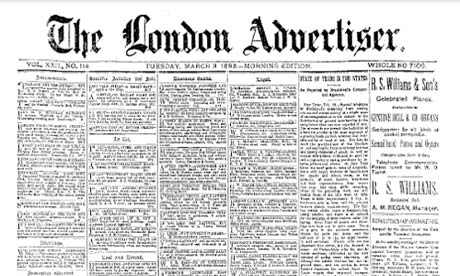Corporations Value Their Lesbian, Gay, Bisexual and Transgender (LGBT) Employees
 Monday morning, 1991. Frank and I settled into our shared office at the San Francisco headquarters of a major corporation. We were still flying high from an inspiring Pride Weekend. Sipping his latté, he glanced at his monitor, “Julie! Look at the Intranet!” I quickly logged into the corporate Intranet, a newly deployed technology tool, and read, “This Company should never hire bull daggers, dykes (sic) and faggots.” I read on. “I was humiliated to see our vehicles on the nightly news festooned with pansies and dykes.” And then, “How did these fairies and male ladies (sic) get hired in the first place?” and “I was humiliated by our company supporting this sideshow of misfits.”
Monday morning, 1991. Frank and I settled into our shared office at the San Francisco headquarters of a major corporation. We were still flying high from an inspiring Pride Weekend. Sipping his latté, he glanced at his monitor, “Julie! Look at the Intranet!” I quickly logged into the corporate Intranet, a newly deployed technology tool, and read, “This Company should never hire bull daggers, dykes (sic) and faggots.” I read on. “I was humiliated to see our vehicles on the nightly news festooned with pansies and dykes.” And then, “How did these fairies and male ladies (sic) get hired in the first place?” and “I was humiliated by our company supporting this sideshow of misfits.”
Like moths to flames, Frank and I logged on each successive morning as hundreds of similar messages rained down, each one digitally signed with the author’s name and department. When remarks escalated to threats, we suspected that the posters didn’t realize they could be identified, since Intranets were so new. Comforted by assumed anonymity, the attacks went free-style. When our newly-formed LGBT Employee Resource Group (ERG) had dressed in company uniforms and flanked a large company vehicle in the Pride Parade, we’d been naïve not to prepare for this onslaught-if one can ever prepare for insults and threats on the company’s dime.
Two weeks into the attacks, our ERG gathered to create a response. Like secret refugees in an underground bunker, we met off company property and off the clock. Many were scared they’d lose their jobs in an impending witch hunt. Many were angry and wanted vengeance. Some said we never should have marched. By meeting’s end, we agreed on only one action item-we would take our concerns to the highest ranking company official who would listen.
The head of human resources met us at 5pm in a company auditorium. Both LGBT and allies from their own respective ERG’s attended. First we heard a speech, very canned and polished, stating boiler plate sentiments about our great value to the company. The official pointedly never used the words “Gay,” “Lesbian” or any other relevant term.
When he opened for comments, a tsunami washed over the podium. Flanked by his HR colleagues, he stood like a wooden post listening as two themes emerged: Why did the company allow the offensive postings to continue without taking action? Why had the company treated LGBT employees differently from other employees who were protected by company policy?
Some angry employees threatened to go to the gay press, which for a company headquartered in a city known the world over as a gay Mecca, meant risking embarrassing boycotts and protests. The meeting ended on a sour emotional note when employees spontaneously stood and turned their backs on the HR official when he said, “You people have to understand that many employees disapprove of your lifestyle. Why do you force yourselves on them?”
By next morning, the employee forum was closed with this statement: “Due to inappropriate remarks posted by a small number (sic) of employees, this forum is closed.”
Many ERG members believed the removal of the employee forum punished all employees for the actions of specific employees. While eventually HR sent around a memo encouraging workplace courtesy, many employees felt the punishment did not fit the crime.
Yet, because we stood fast together as an ERG, for the first time, company officials realized that LGBT employees were a true part of the company and needed to be treated as such. As our ERG meetings grew, we became the fire that caused the company to become one of the first to grant full domestic partner benefits, including granting pension benefits to surviving domestic partners.
Today this same company remains a strong supporter of its LGBT employees and has donated hundreds of thousands of dollars to causes in support of our equality. …

 An internet phenomenon or a meme is an image, video, phrase or just an idea that spreads from one particular person to a different seemingly for no logical purpose at all. This was primarily due to the improve in the literacy charge, the attention by people of the importance of stories and the papers that delivered it, the rise in promoting (the main income stream for a information agency) serving to to promote the beginning of additional papers catering just to promoting, and entrepreneurs beginning to view the newspaper industry as a place to generate income.
An internet phenomenon or a meme is an image, video, phrase or just an idea that spreads from one particular person to a different seemingly for no logical purpose at all. This was primarily due to the improve in the literacy charge, the attention by people of the importance of stories and the papers that delivered it, the rise in promoting (the main income stream for a information agency) serving to to promote the beginning of additional papers catering just to promoting, and entrepreneurs beginning to view the newspaper industry as a place to generate income.





